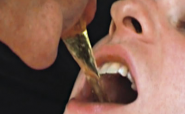
|
Zuzana Štefková
|
Teoría
|
01.03.2007
|
|
SALIENDO DEL CLÓSET AL ESTILO CHECO (ESLOVACO)
|
| “¡Infeliz!, ¿Cómo puedes entregarte a tus instintos?”, dice en francés un hombre viejo con la cara ensangrentada a un joven, también bañado en sangre, que se aleja de él, moribundo y a rastras, a través de un jardín. “Meter tu pito en un coño apestoso y chorreante… ¡Después de eso se te caerá!”. Sin siquiera levantar la voz, prosigue con su insólita afirmación: “Nunca podrás descubrir esa… |
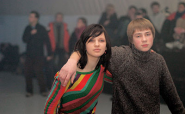
|
Solvej Helweg Ovesen
|
Teoría
|
01.02.2005
|
|
MOMENTS IN MUSEUMS
|
| ”We lack a specific history and knowledge of how situations have been designed or lack design in museums; of how we can go about shifts in temporality. To focus on the performative dimension of an artwork evokes the question of how event and historicity are connected in a museum.”
There are some particular situations in museums – which, in retrospect, can be considered moments that are worth… |
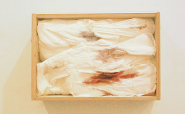
|
Alice Červinková a Kateřina Šaldová
|
Teoría
|
01.01.2005
|
|
I USE THAT WORD FEMINISM ONLY INTIMATELY AND WHEN IT IS DARK…
|
| (from an investigative interview)
Recently, we presented two themes as part of a research project (1) aimed at women working in today’s art world: The relationship of women artists towards feminism, and the concept of women’s art. We worked on the presumption that the women’s art scene is created collectively by women.
In examining these themes, we talked with the artists themselves—artists,… |
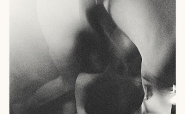
|
Věra Sokolová
|
Teoría
|
01.01.2005
|
|
VOLUNTARY INVISIBILITY?
|
| Visual Arts and Lesbian Identity
There have always been artists who are lesbians. There have always been lesbians who make art. Putting aside debates about whether it is possible to call lesbians women, who had desired or loved other women before the modern category of a lesbian was established in the end of the 19th century, there have always been “lesbian artists.” However, definitions and… |
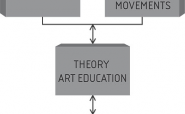
|
Theopisti Stylianou
|
Teoría
|
01.01.2005
|
|
"HOUSTON, WE HAVE A PROBLEM"
|
| Bringing celestialart philosophy production down to the earthly sphere of adult art education
Is art philosophy a distant, blinking star in the sky of art education or a shining sun? As a practicing adult art educator I can assure you that the transition from art philosophy to art education practice is not that easy. With this article I attempt to explain why this is the case by demonstrating… |
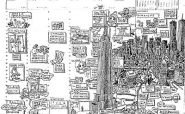
|
Estelle Artusová
|
Teoría
|
01.04.2004
|
|
SPACES FOR COLLECTIVE WORK: FILM AND VIDEO
|
| In groups, communities, or simply in pairs, working with others is more than an option for the artist, it may be a temptation. The organization of an artistic group acts upon its members as much as it influences the work which is eventually made. The term, eventually, should be emphasized because the community of artists itself can be presented as an oeuvre. The artistic group, considered as an… |
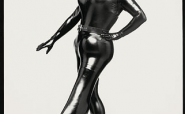
|
Peter Weibel
|
Teoría
|
01.03.2004
|
|
MASOCHISM AS A POST-PHALLIC MANDATE
|
| By Peter Weibel
1 The cruel woman
The masochistic construct of the femme fatale and the vamp between nature and machine
Duino elegy 1
And if I cried, who'd listen to me in those angelic orders?
Even if one of them suddenly held me to his heart,
I'd vanish in his overwhelming presence.
Because beauty's nothing but the start of terror we can hardly bear,
and we adore it because of the serene… |

|
Ulf Poschardt
|
Teoría
|
01.01.2004
|
|
STRIPPED POP AND AFFIRMATION IN KRAFTWERK, LAIBACH AND RAMMSTEIN
|
| This is a revised version of a lecture held on 29 January 1999 in Potsdam during the Leni Riefenstahl exhibition. It intended to deal with the issue of Nazi aesthetics and Pop culture. Rammstein, currently the most successful German band, took part in the discussion. In their music video “Stripped” they use shots from Riefenstahl’s 1936 movie Olympia, and after the lecture a discussion was held… |
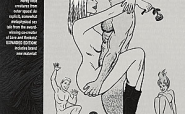
|
Ana Merinová
|
Teoría
|
01.03.2003
|
|
THE CREATIVE MULTIPLICITY OF COMICS
|
| "The comic is a narrative and visual art form capable not only of showing the expressive voice of its creator but of constructing elaborate visual connections that can represent or challenge, among other things, the reality of the present, memory, myths, the subconscious, identity, and culture. Arising at the end of the 19th century, the comic has been able to adapt its expressive possibilities… |
|
Nicolas Bourriaud
|
Teoría
|
01.04.2002
|
|
RELATIONAL AESTHETICS (PART 1)
|
| Relational AestheticsRelational formArtistic activity is a game, whose forms, patterns and functions develop and evolve according to periods and social contexts; it is not an immutable essence. It is the critic’s task to study this activity in the present. A certain aspect of the programme of modernity has been fairly and squarely wound up (and not, let us hasten to emphasise in these bourgeois… |
|























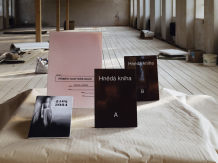
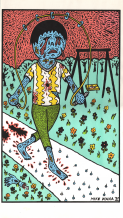
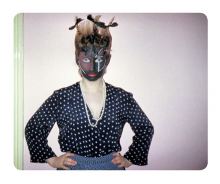
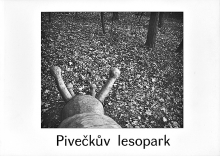
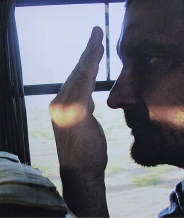


 New book by I.M.Jirous in English at our online bookshop.
New book by I.M.Jirous in English at our online bookshop.